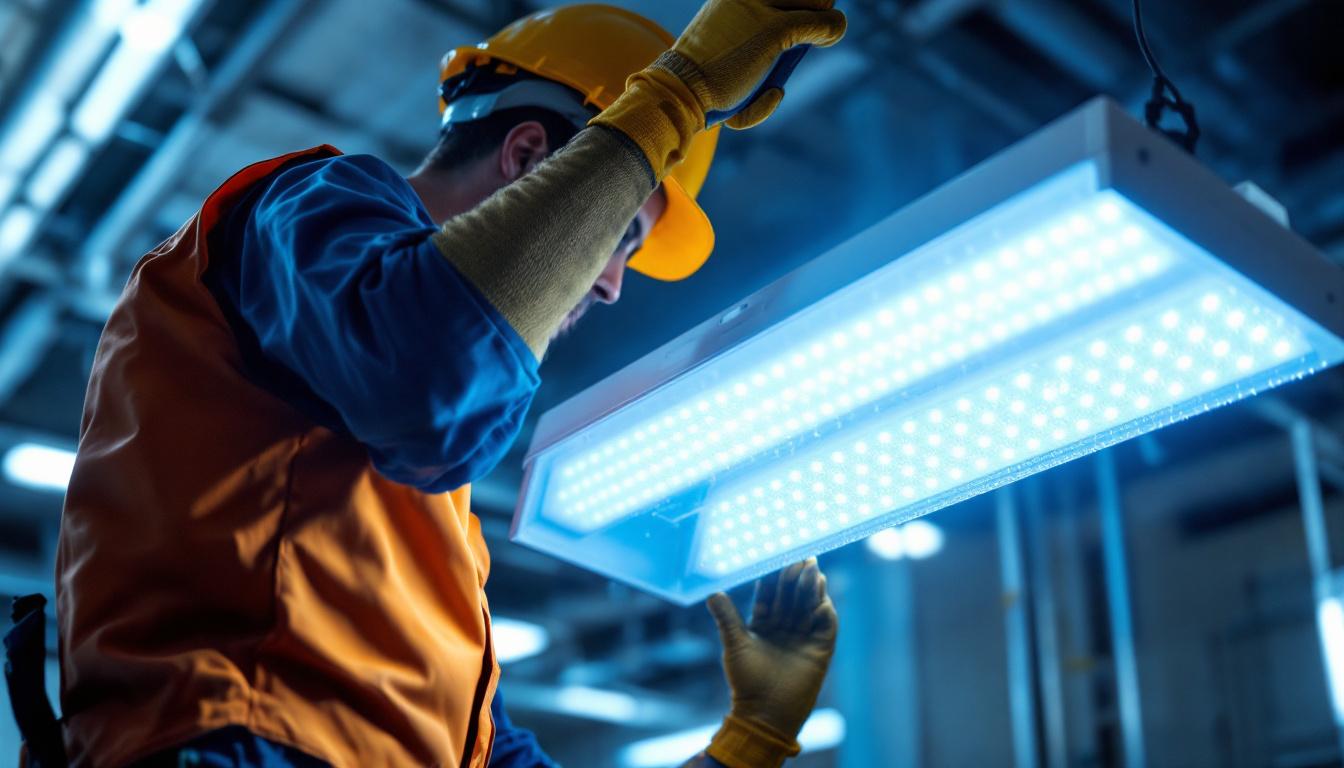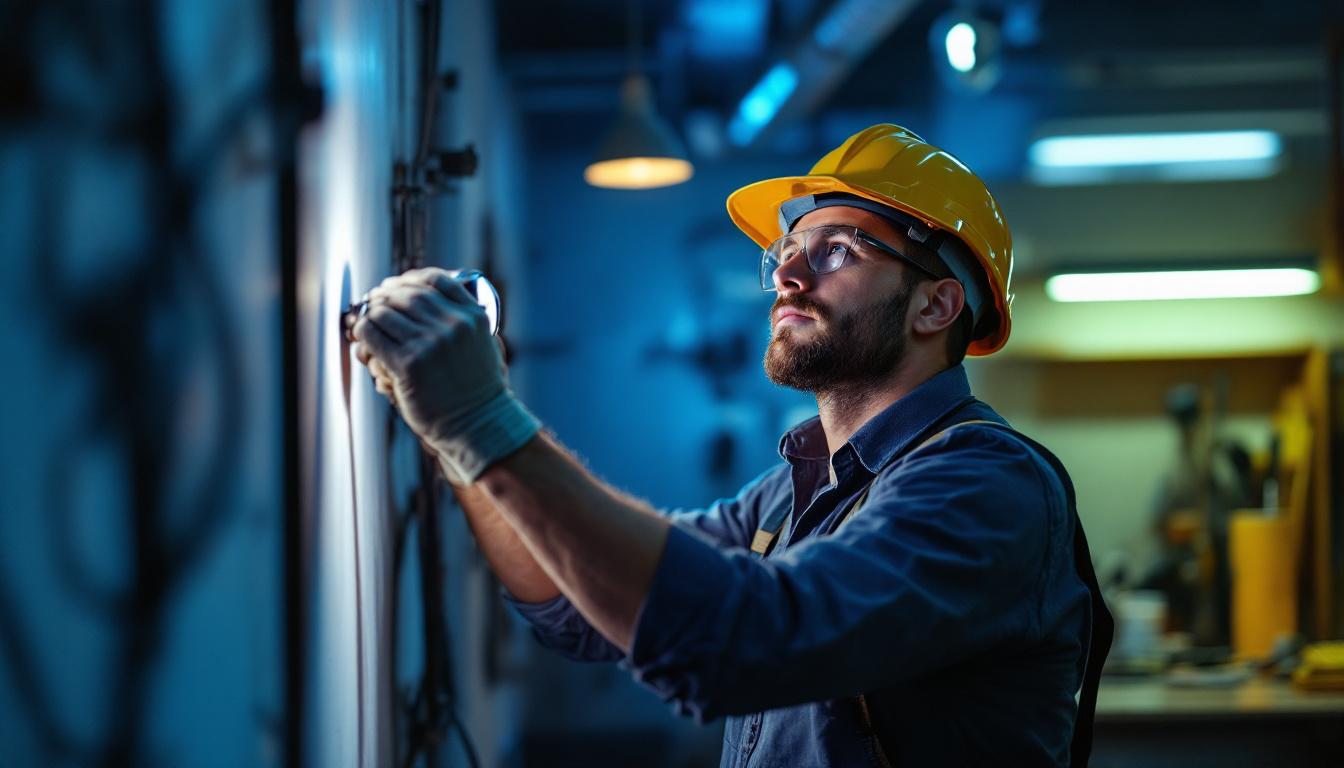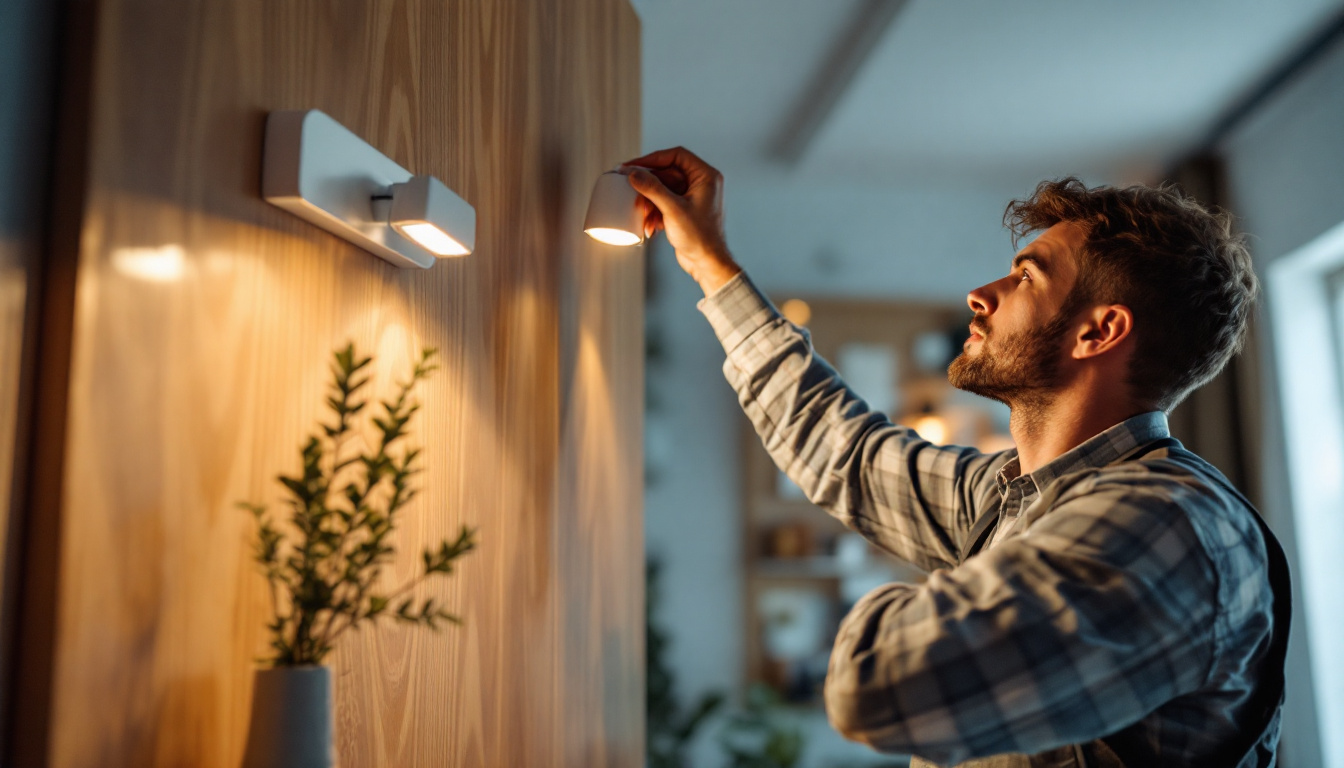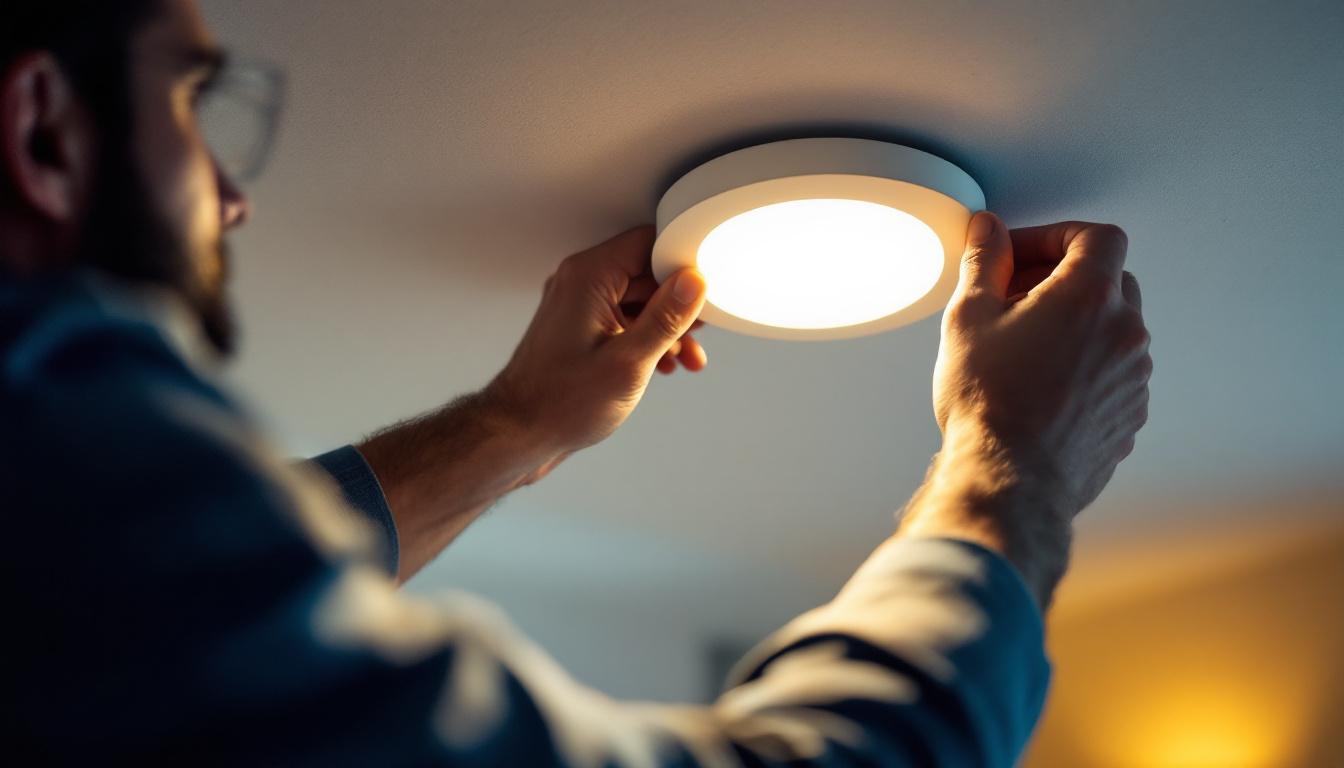
In the rapidly evolving world of lighting solutions, LED technology has emerged as a game-changer, particularly in the realm of long-format lighting such as 8-foot fixtures. While the advantages of LED lights are well-known, the installation and application of these fixtures can be fraught with challenges. Lighting contractors often encounter pitfalls that can compromise the effectiveness of their projects. This article delves into common mistakes made by lighting contractors when working with LED 8-foot lights, offering insights to enhance efficiency and outcomes.
Before diving into the common mistakes, it is essential to grasp the fundamental characteristics of LED 8-foot lights. These fixtures are designed for various applications, including warehouses, large retail spaces, and even outdoor areas. Their length allows for extensive coverage, making them ideal for illuminating expansive environments. The design of these lights not only enhances visibility but also contributes to the overall aesthetic of the space, providing a sleek and modern look that complements contemporary architecture.
LED lights are celebrated for their energy efficiency and long lifespan. Unlike traditional fluorescent or incandescent bulbs, LED fixtures consume significantly less power while providing the same, if not better, brightness. This efficiency translates into lower electricity bills and reduced maintenance costs over time. Furthermore, the longevity of LED lights—often lasting up to 50,000 hours—means fewer replacements, which is particularly beneficial in hard-to-reach areas where changing bulbs can be a cumbersome task. This durability not only saves time but also minimizes waste, making LED lights an environmentally friendly choice.
LED 8-foot lights come in various designs, including linear, high bay, and low bay options. This versatility allows contractors to choose the right fixture for the specific needs of a project. However, understanding the nuances of each design is crucial to avoid misapplication. For instance, high bay lights are perfect for spaces with high ceilings, such as warehouses or gymnasiums, where they can cast light over a large area without creating harsh shadows. On the other hand, low bay fixtures are better suited for areas with lower ceilings, ensuring that the light is directed where it is needed most. Additionally, many LED fixtures now offer customizable features such as dimming capabilities and color temperature adjustments, allowing users to create the perfect ambiance for any environment.
Installation is a critical phase in any lighting project, particularly with LED 8-foot lights. Mistakes made during this stage can lead to inefficiencies and increased costs. Here are some common pitfalls contractors should avoid.
One of the most frequent mistakes is failing to adequately plan the layout before installation. A comprehensive lighting plan should consider the space’s dimensions, the intended use, and the specific lighting needs. Without a proper layout, contractors may end up with uneven lighting, dark spots, or excessive brightness in certain areas.
Moreover, understanding the spacing between fixtures is vital. Placing lights too far apart can result in insufficient illumination, while placing them too close can create glare and discomfort. A well-thought-out plan will ensure that the lighting is both functional and aesthetically pleasing. It is also beneficial to take into account the color temperature of the lights, as this can significantly affect the ambiance of the space. For example, cooler temperatures may be more suitable for workspaces, while warmer hues can create a cozy atmosphere in residential settings.
Another common oversight is neglecting the electrical requirements for LED 8-foot lights. Different fixtures may have varying voltage and wattage needs, and failing to account for these can lead to installation issues or even damage to the lights. Contractors should always verify the electrical specifications and ensure that the existing wiring can support the new fixtures.
Additionally, it is crucial to consider the circuit load. Overloading a circuit can lead to tripped breakers or, in severe cases, electrical fires. A thorough understanding of the electrical system is essential to prevent these hazards. It is also wise to consult local building codes and regulations, as they may impose specific requirements for electrical installations. Ensuring compliance not only enhances safety but can also facilitate smoother inspections and approvals, ultimately saving time and resources during the project lifecycle.
Selecting the appropriate LED 8-foot lights for a project is vital. Many contractors make the mistake of opting for the cheapest option without considering the long-term implications. Quality should never be compromised for cost.
While budget constraints are a reality, investing in high-quality fixtures can save money in the long run. Cheaper lights may not only have a shorter lifespan but can also lead to increased maintenance costs and energy consumption. Contractors should evaluate the total cost of ownership rather than just the initial purchase price.
Furthermore, it is essential to consider the manufacturer’s reputation. Reputable brands often provide better warranties and customer support, which can be invaluable in case of issues down the line.
Another critical aspect of choosing LED 8-foot lights is understanding light output (measured in lumens) and color temperature (measured in Kelvin). Many contractors overlook these specifications, leading to inadequate lighting solutions.
For example, a warehouse may require bright, cool lighting (around 5000K) for optimal visibility, while a retail space might benefit from warmer lighting (around 3000K) to create a welcoming atmosphere. Matching the light output and color temperature to the specific needs of the environment is essential for achieving the desired effect.
Maintenance is often an afterthought during the planning and installation phases. However, neglecting this aspect can lead to significant issues down the line. Contractors should consider how easy it will be to access and maintain the fixtures once installed.
When installing LED 8-foot lights, it is crucial to ensure that they are easily accessible for maintenance. Fixtures placed in hard-to-reach areas can lead to increased labor costs and downtime when repairs or replacements are needed. Planning for accessibility can save time and money in the long run.
Additionally, contractors should educate clients on the importance of regular maintenance, including cleaning fixtures and checking for any signs of wear or damage. A proactive approach can extend the lifespan of the lights and ensure optimal performance.
Many contractors fail to fully understand the warranty and support options available for LED fixtures. Each manufacturer has different terms, and knowing these can help contractors manage client expectations and provide better service. Understanding warranty coverage can also guide decisions on repairs or replacements when issues arise.
Environmental factors play a significant role in the performance of LED 8-foot lights. Contractors often overlook how elements such as temperature, humidity, and exposure to elements can affect the longevity and efficiency of the fixtures.
LED lights have specific temperature and humidity ratings. Installing fixtures in environments that exceed these ratings can lead to premature failure. For instance, outdoor installations must consider weatherproof options, while indoor installations in humid areas may require fixtures rated for high humidity.
Contractors should always assess the environmental conditions of the installation site and select appropriate fixtures to ensure durability and performance.
Compliance with local building codes and regulations is another crucial aspect that contractors must not overlook. Many areas have specific requirements for lighting installations, including energy efficiency standards and safety regulations. Failing to adhere to these codes can result in penalties and the need for costly rework.
Staying informed about local regulations and ensuring that all installations meet these standards is essential for a successful project.
Effective communication with clients is often underestimated in the lighting installation process. Misunderstandings can lead to dissatisfaction and potential conflicts. Contractors should prioritize clear communication at every stage of the project.
One common mistake is failing to set realistic expectations regarding timelines, costs, and outcomes. Clients may have specific visions for their lighting, and it is the contractor’s responsibility to ensure that these visions align with practical realities. Open discussions about what is achievable within the budget and timeframe can prevent misunderstandings later on.
Furthermore, contractors should keep clients informed throughout the installation process, providing updates and addressing any concerns that may arise. This proactive approach fosters trust and satisfaction.
Clients may not fully understand the features and benefits of LED 8-foot lights. Educating them on the advantages, such as energy savings and longevity, can help them appreciate the value of the investment. Providing information on how to operate and maintain the fixtures can also empower clients and enhance their overall experience.
Working with LED 8-foot lights presents unique opportunities and challenges for lighting contractors. By avoiding common mistakes related to installation, fixture selection, maintenance, environmental considerations, and client communication, contractors can enhance their project outcomes and client satisfaction.
As the lighting industry continues to evolve, staying informed about best practices and emerging technologies will be crucial. By prioritizing quality, planning, and communication, contractors can position themselves as leaders in the field, delivering exceptional lighting solutions that meet the diverse needs of their clients.
In conclusion, the transition to LED lighting is not just about replacing old fixtures; it is about embracing a new approach to lighting design and installation. By recognizing and addressing these common mistakes, lighting contractors can ensure that their projects shine brightly and efficiently for years to come.
Ready to elevate your lighting installations and avoid the common pitfalls discussed in this article? Choose LumenWholesale for your LED 8-foot light needs and experience the difference that quality and value can make. Our spec-grade lighting products are designed to meet the highest industry standards, ensuring you deliver exceptional results to your clients. With unbeatable wholesale prices, free shipping on bulk orders, and no middleman markups, you can trust us to provide the best value for your lighting solutions. Don’t compromise on quality or cost—visit Wholesale Lighting at the Best Value and make your next project shine with LumenWholesale.

Discover the ultimate guide for lighting contractors with “Light Phoenix.” Uncover top resources, expert tips, and innovative strategies to master the art of lighting design and installation.

Discover why LED lamp fixtures are a game-changer for lighting contractors.

Discover how using recessed lights with covers can revolutionize efficiency for lighting contractors.

Discover how LED fluorescent tube lights are revolutionizing the lighting industry and impacting contractors’ profits.